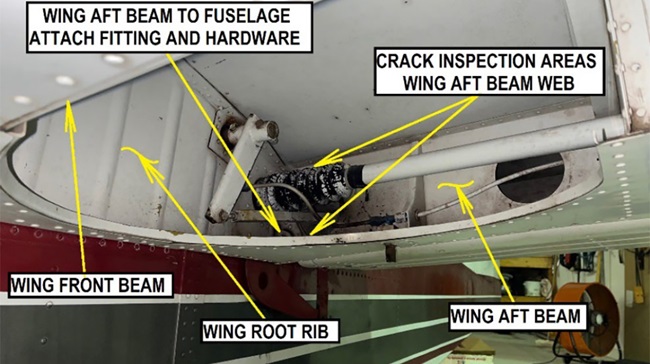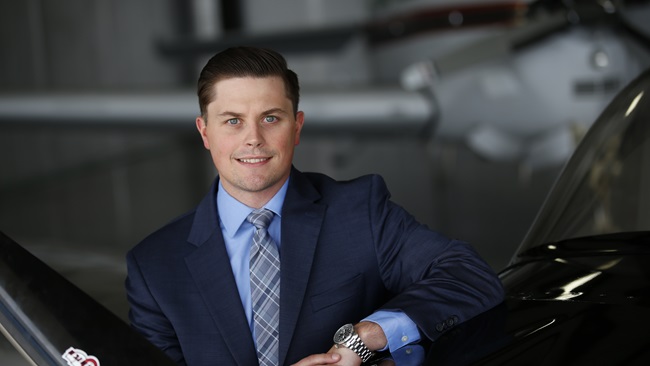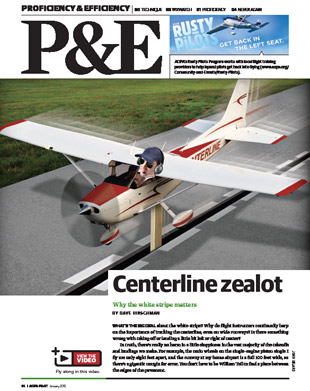 Centerline zealot
Centerline zealot
A good pilot is always learning—and readers agree with Dave Hirschman that the white line matters.
Great article on keeping the centerline. As a fairly new pilot (October 2014), my instructor would always harp on me about keeping centered, regardless of takeoff or landing. For some reason I always had a tendency to touch down a little left of the line on landings. I knew he meant well, but I used to wonder why he made such a big deal about a few measly feet. Fast-forward a month later, I’m on an exploration flight to an airport where I’d be picking up a coworker to bring into the office for a day. Until that time I had been used to a runway that was 60 feet wide and it felt a bit narrow at that; of all the planning tasks I had done, paying special attention to the runway width of the destination airport was not one of them. The airport in question only had a 30-foot-wide strip, half of what I had been used to, and the visual of that on final is not something I will soon forget. Experience is a wonderful teacher. Needless to say, I now try to stick to that centerline like glue.
Paul Steklenski
AOPA 8838718
Schwenksville, Pennsylvania
Yes, the white stripe matters; so does the touchdown zone. The runway is a two-dimensional space. Not only may future landings be made on narrow backcountry airstrips, but some will be short runways. So pick a spot on the runway and land on it. The self-training is free, doesn’t require a safety pilot, and may save your life one day. But mostly it will make you a better pilot whose landings will improve over time.
Lex Thistlethwaite
AOPA 822282
Sunset, Louisiana
Instructors and pilots who demand centerline adherence typically preach placement of the nosewheel directly on centerline. But by projecting the alignment and placement of the airplane, pilots typically land well left of the centerline and in a light crab.
A better way is to place the centerline right between your legs; in any airplane, in any seat, and on any surface. Accepting this small error eliminates the above-mentioned traits, and quickly becomes second nature, allowing the pilot to focus on more critical items. Whether you are flying a Skyhawk or Boeing 747, this technique will improve your landings.
David J. Williams
AOPA 4675492
Brooklyn, New York
Although related technique on directional control was certainly outside the scope of this article, I thought it appropriate to mention a factor I don’t recall having seen in print previously. The usual interpretation of aligning the aircraft on the runway centerline is obviously one of placing the center of the aircraft on same. In side-by-side seating aircraft, the pilot’s visual perspective to the runway centerline, is one of infinite convergence to the centerline in the distance (not ideal for translating the visual to the feet). I found that for early/primary students, rudder control inputs were lessened and required skill levels were more quickly achieved by placing the pilot’s eyeballs on the centerline. This usually offsets the aircraft centerline by only about two inches.
Dick Lewis
AOPA 119753
Madeira Beach, Florida
“I was flying with this older World War II aircraft commander and I was landing on the right side of the runway. His simple way to break me of that habit was to think of that centerline as a horse and to put it between my legs, as if I was riding it. Problem solved.”
Dick Hendrickson
AOPA 646965
Dundee, Illinois
About those Kardashians
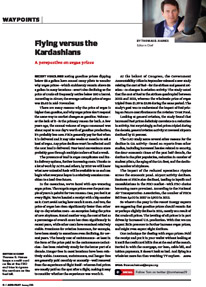 I enjoyed Tom Haines’ perspective on avgas pricing (“Waypoints: Flying Versus the Kardashians”)—especially pointing out why prices haven’t yet dropped because of slow sales of the current supply. However, I most enjoyed his closing technique (fold the receipt without looking at it until the end of the month when other bills are due).
I enjoyed Tom Haines’ perspective on avgas pricing (“Waypoints: Flying Versus the Kardashians”)—especially pointing out why prices haven’t yet dropped because of slow sales of the current supply. However, I most enjoyed his closing technique (fold the receipt without looking at it until the end of the month when other bills are due).
I recently bought a T182T and flew her on a maiden cross-country to meet my original flight instructor for lunch. My high-performance checkout and some maintenance flights had emptied the tanks so I filled up during lunch. I don’t normally look at the receipt when I fill up my car, but the almost $600 for the airplane caught my eye! Yowza!
Where I am based, they seem to be under the impression that eight bucks a gallon is fair, so I flew to a nearby field for the next fill-up, including extended-range tanks. I shoved that receipt right in my pocket. It works.
Eric O. Jakimier
AOPA 639588
Dallas, Texas
Serious Sirius

Thanks for the report on the Sirius LSA and wonderful cover shot. For years I have been urging AOPA to support the movement with better coverage. It is the future of GA. This fell on deaf ears with our previous president, in my experience. I’m confident Mr. Baker is receptive. I look forward to meeting him. As a 45-year aircraft owner and member, I look forward to future LSA coverage.
Robert Viscio
AOPA 419037
Wolfeboro, New Hampshire
Controlling the situation
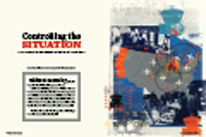 Air traffic controllers, by occupational force of habit, intentionally try to say it all in as few words as possible. I therefore say, “You nailed it.” Dave Hirschman’s article on the Chicago Center fire was spot on. It will be one of the greatest highlights of my 30 years of work in the air traffic control business to have played a small part in that effort. In support of Aaron Merrick’s sentiment—“I have never been so proud to be a controller”—I will say that I have never been prouder of the men and women with whom I share my profession. On any given day they are fantastic, but when faced with what seems impossible, they will truly amaze. I am very grateful to have been a part of what, for me, will likely be one of the very last major events in a great and fulfilling career as it is close to being done. Thank you for a great article and thank you, my coworkers, for what you do and will continue to do.
Air traffic controllers, by occupational force of habit, intentionally try to say it all in as few words as possible. I therefore say, “You nailed it.” Dave Hirschman’s article on the Chicago Center fire was spot on. It will be one of the greatest highlights of my 30 years of work in the air traffic control business to have played a small part in that effort. In support of Aaron Merrick’s sentiment—“I have never been so proud to be a controller”—I will say that I have never been prouder of the men and women with whom I share my profession. On any given day they are fantastic, but when faced with what seems impossible, they will truly amaze. I am very grateful to have been a part of what, for me, will likely be one of the very last major events in a great and fulfilling career as it is close to being done. Thank you for a great article and thank you, my coworkers, for what you do and will continue to do.
Shawn Simms
AOPA 380863
Smithtown, New York
Whoops!
In “This Month in Aviation,” February 2015 AOPA Pilot, we reported that John Glenn orbited the moon on February 20, 1962. We were out of this world on that one—the honorable Mr. Glenn orbited the Earth. Also, Apollo 14 landed on the moon in 1971, not 1977.
The air-to-air photographs of the Stemme S10–VT that accompanied “Power Sailing” (November 2014 AOPA Pilot) were taken by Christina Scheunemann and provided courtesy of the German publication fliegermagazin.
Pilot regrets the errors.
Fans on Twitter
“The February @AOPA PILOT magazine for the iPad is available. It’s gonna be a good day.”
@TC_737Pilot
We welcome your comments. Editor, AOPA Pilot, 421 Aviation Way, Frederick, Maryland 21701 or email ([email protected]). Letters may be edited for length and style before publication.
Hangar Talk
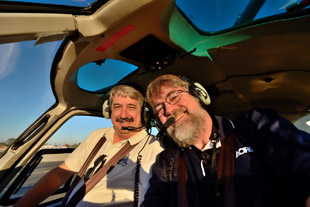 As magazine editors we receive a lot of friend requests on Facebook and other social media sites from our readers and fellow pilots—knowing full well that we’ll never meet most of them in person, says Technical Editor Mike Collins. When Larry Welk, owner of Angel City Air (see “Good Morning, Los Angeles,” page 58), told Collins he would be flying with veteran L.A. news helicopter pilot Derek Bell, the name was immediately familiar. It turns out that Bell had friended Collins on Facebook when he was flying around the world with Mike Laver in his Mitsubishi MU–2 (“Around the World in 25 Days,” December 2013 AOPA Pilot). “Not only did I get to meet Bell, but we spent two days flying above the L.A. freeways in an AStar,” Collins says. “In the best social media tradition, I snapped this selfie during cooldown after a morning news cruise.”
As magazine editors we receive a lot of friend requests on Facebook and other social media sites from our readers and fellow pilots—knowing full well that we’ll never meet most of them in person, says Technical Editor Mike Collins. When Larry Welk, owner of Angel City Air (see “Good Morning, Los Angeles,” page 58), told Collins he would be flying with veteran L.A. news helicopter pilot Derek Bell, the name was immediately familiar. It turns out that Bell had friended Collins on Facebook when he was flying around the world with Mike Laver in his Mitsubishi MU–2 (“Around the World in 25 Days,” December 2013 AOPA Pilot). “Not only did I get to meet Bell, but we spent two days flying above the L.A. freeways in an AStar,” Collins says. “In the best social media tradition, I snapped this selfie during cooldown after a morning news cruise.”
What do you think avgas prices will do in 2015?
Decrease: 49.3%
Increase: 25.4%
Stay the same: 25.1%
